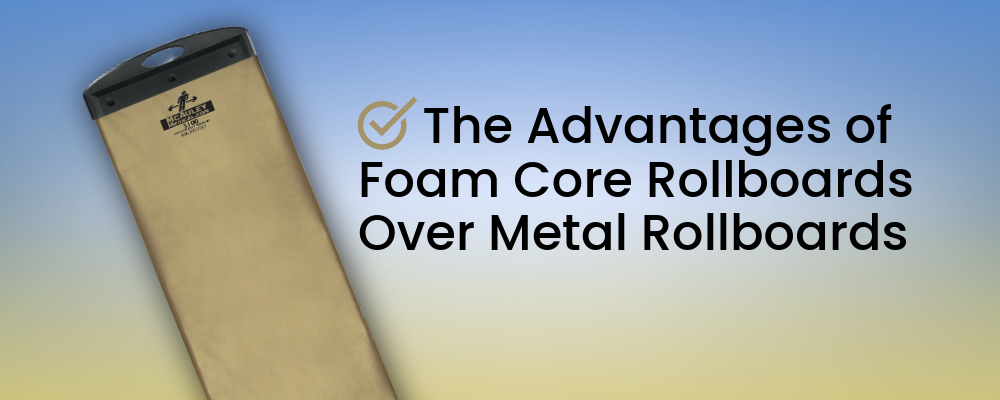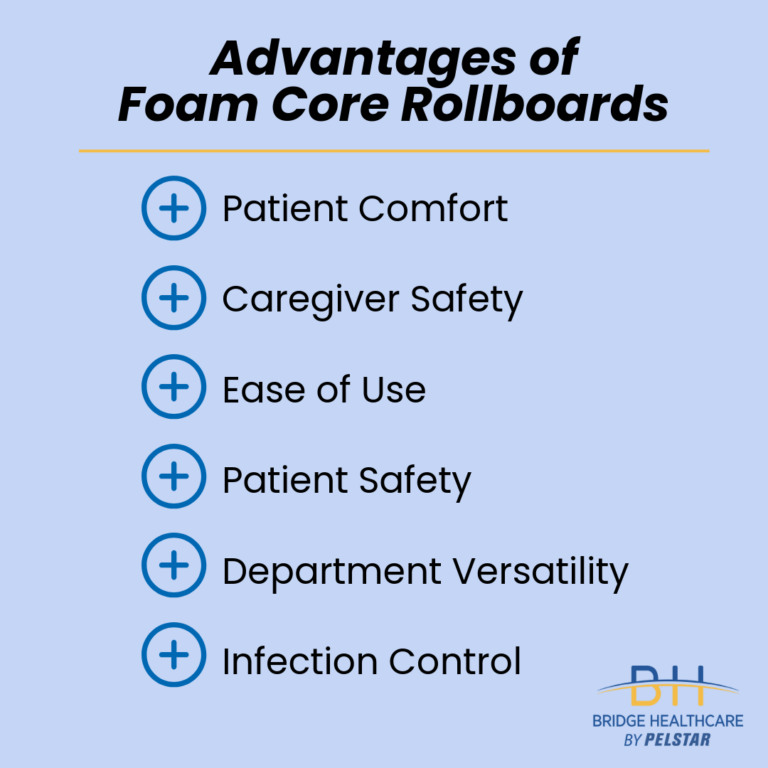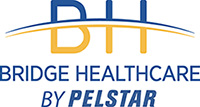
In healthcare, patients with limited mobility may need to be moved between two surfaces, such as from a bed to a stretcher. It is critical to ensure both caregiver and patient safety during the transfer process. Facilities can utilize a variety of medical products to move the patient, most commonly a transfer board.
How are transfer boards used?
Transfer boards provide a stable and secure way for patients to be moved between surfaces. The board acts as a bridge between the two surfaces, and caregivers use a draw sheet to slide the patient across the board, reducing the amount of push/pull effort required by the caregivers. With up to a 40% reduction in force needed, using a transfer board protects caregivers from muscle strains and back injuries. Transfer boards also keep patients safe by minimizing the risk of skin damage or falls.
What types of transfer boards are available?
Medical facilities use various types of transfer boards, most commonly a metal rollboard or a foam core rollboard. Metal rollboards are made of rigid, heavy plastic with built-in metal rollers. These rollers are placed along the length of the board and act as a conveyer belt to reduce friction. Foam core rollboards are made of lightweight, sturdy foam as the inner layer. The outer layer is typically made of a durable material that rotates around the foam core serving as the conveyer system that the patient slides along.
Which type of board is best for a medical facility?
Using a foam core rollboard provides several advantages vs. using a metal rollboard.
Patient Comfort – The hard rollers of a metal rollboard can be very uncomfortable for a patient during their transfer, especially for frail elderly or those with sensitive skin. The transfer process can also be frightening for some patients and the additional discomfort of the metal rollers can contribute to a negative experience. Foam core rollboards feature a soft and smooth surface which is more comfortable to slide across during a transfer. The lightweight construction of a foam core rollboard is also less intimidating than the large, metal rollboard and can provide a more gentle and dignified transfer experience for the patient.
Caregiver Safety – Though using a transfer board can reduce the physical effort required to transfer a patient, there is still a risk of caregiver injury when using a large, heavy rollboard. Staff may pull a muscle when lifting the metal rollboard onto the transfer surface. Metal rollboards are also not as effective in reducing the force needed to move the patient so there is still the chance of staff injury during the transfer. Foam core rollboards are significantly lighter than metal rollboards so staff can easily lift the board, reducing staff fatigue. The foam core rollboard also utilizes low friction fabrics which allows for a more efficient transfer.
Ease of Use – When urgent treatment is required, patient transfers need to be completed without delay. Using a lightweight foam core rollboard allows staff to quickly place the board under the patient to smoothly complete the transfer. Foam core rollboards are also easily portable and can be hung on wall hooks, improving workflow and storage. Metal rollboards are heavy, some models as large as 15lbs, which can slow the transfer process and place more strain on the caregiver. Staff must carry the large board from where it is stored and the cumbersome size makes it more difficult to position onto the transfer surface.

Patient Safety – If facilities are using only bedsheets for patient transfers not only are the caregivers at risk of injury, but the patient’s skin could be torn due to the friction. Using a transfer board is ideal for both patient and caregiver safety, but foam core rollboards provide additional protection for the patient. The surface of a foam core rollboard is smooth so the draw sheet slides easily along minimizing the risk of skin shear. Metal rollboards have the potential to bruise the patient’s skin from the hard rollers.
Department Versatility – Metal rollboards have limitations for their usage as they are not MRI safe. The non-metallic construction of foam core rollboards allow them to be used throughout a facility including imaging environments. Metal rollboards are usually available in only 1 or 2 sizes, but foam core rollboards are offered in several different sizes as well as foldable options to be used in a wide range of clinical settings, from emergency rooms to radiology and long-term care.
Infection Control – Select foam core rollboards offer some additional features to help with infection control such as antimicrobial materials. The outer layer of the foam core and the rollboard handles can be treated with antimicrobial agents to help inhibit bacterial growth. Some products may also be constructed with heat-sealed seams which can prevent contamination and limits places for germs to grow.
Using some type of equipment to assist with patient transfers is vital in medical facilities to protect both patients and staff. When evaluating the most effective patient transfer board it is beneficial to choose a foam core rollboard considering its several advantages.
Pelstar LLC / Bridge Healthcare offers the McAuley Medical Gold Rollboards—designed to offer significant benefits vs. traditional metal rollboards.
To learn more about the comprehensive line of McAuley Medical Gold Rollboards, visit https://bridgehcusa.com/goldroll-boards/ or call 1-800-815-6615
